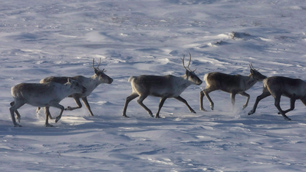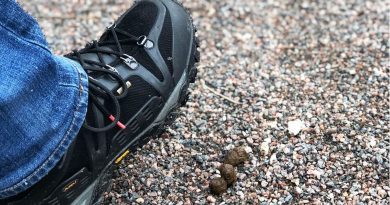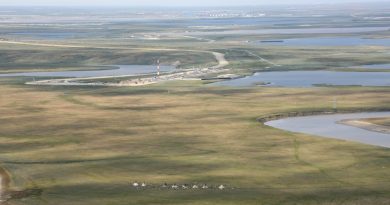Diamond Mine in Northwest Territories, Canada Raises Caribou Migration Concerns
A new diamond mine being proposed in the Northwest Territories could drive caribou herds farther away from their usual migration routes, according to some in the area.
 De Beers’ proposed Gahcho Kue mine, located about 280 kilometres northeast of Yellowknife, is on the traditional migration routes of the Bathurst, Akiak and Beverly caribou herds, according to an environmental impact statement that the company has recently filed with regulators.
De Beers’ proposed Gahcho Kue mine, located about 280 kilometres northeast of Yellowknife, is on the traditional migration routes of the Bathurst, Akiak and Beverly caribou herds, according to an environmental impact statement that the company has recently filed with regulators.
If approved, the Gahcho Kue mine will be just 80 kilometres southeast of De Beers’ Snap Lake mine, which is already in commercial production, and not far from the N.W.T.’s two other existing diamond mines.
“They’re driving the caribou away from those winter roads,” Chief Antoine Michel of the Lutselk’e Dene First Nation in Lutselk’e, N.W.T., told CBC News.
“It’s so noisy with so many trucks going by, I think the caribou has moved the routes.”
Michel said while people in his community may benefit from jobs and training from the mine, they may have to travel farther east to hunt caribou.
Hard to predict: expert
But Kim Poole, a B.C.-based wildlife biologist and consultant, said it is difficult to predict what effects a new mine would have on caribou movements or their populations.
“Things add up — everything from climate change, to the effects of hunting to predation to industrial disturbance to helicopters to everything,” he said.
“The trick is trying to balance out how much influence everything has on the cumulative nature of all of the disturbances.”
Poole, who has studied caribou for government, mining companies and environmental monitoring agencies, said caribou have avoided the N.W.T.’s diamond mines in recent years.
“If you’re looking at the scale of the mine site, yes, you can probably say there’s a reasonable chance that some caribou will not try and walk through the mine area or the zone around it,” he said.
“But at a larger scale, at the territory-wide scale, it’s a bit difficult to try and jump to conclusions that say the caribou will not migrate towards the East Arm of Great Slave Lake anymore because of a new mine going in there.”
Poole said more research is needed into what exactly drives caribou away from the mines.
De Beers submitted its environmental impact statement last month, two years behind schedule. If approved, the Gahcho Kue mine could be in operation by 2014.
Michel said he wants aerial surveys of the affected caribou herds to take place after the new mine opens.



